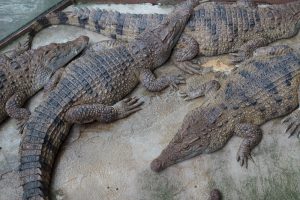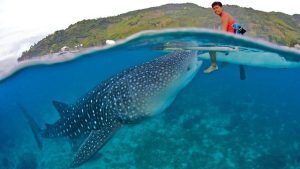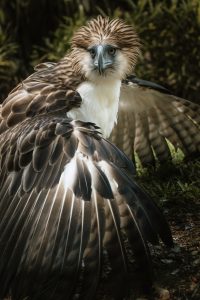The semiotics of anthropomorphized animals in the Philippines’ media landscape
John Micael Callao
Have you ever considered how the media’s portrayal of animals can shape our understanding of their meaning? Why do we often attribute human characteristics to these animals, turning them into our friends, kin, emotional characters, metaphors, or representations in our stories?
In the Philippines, the interplay of animal anthropomorphism, semiotics, and communication occurs within its evolving media landscape (Mendoza 2017), influencing public perception, policy decisions, and conservation efforts.
The concept of anthropomorphism, which involves ascribing human-like characteristics to non-human entities, plays a significant role in shaping our understanding of the animal kingdom (Kull 2014). From popular Disney characters to animal-themed movies and literature, as well as our daily interactions with our pets (Agrawal et al. 2020:13), anthropomorphism pervades various aspects of our lives and serves as a bridge between humans and animals, facilitating comprehension and actions. Semiotics, the study of signs and their meanings, provides a useful framework for understanding the symbols, representations, and communication involved in anthropomorphism (Tønnessen and Tüür 2014:2-18).
This case study investigates how meaning is conveyed and interpreted in the media landscape through a semiotic lens, with a focus on three anthropomorphized animals: the Philippine Saltwater Crocodile (Crocodylus porosus), the Butanding or Whale Shark (Rhincodon typus), and the Philippine Eagle (Pithecophaga jefferyi). Through an analysis of media reports, the study reveals the underlying meanings of the visual and linguistic signifiers used to represent the animals and how they contribute to constructing and reinforcing certain cultural, social, and political values.

“Philippine crocodile” by Julia Sumangil is licensed under CC BY-SA 4.0
The Philippine Saltwater Crocodile signifies predation and political corruption within the context of Philippine society (Manalo and Manalo 2022). Various communication and media platforms contribute to the semiotic web surrounding this anthropomorphized reptile. In Filipino culture, the saltwater crocodile is depicted as a man-eater, symbolically linked to political figures colloquially known as “buwaya” (Van Der Ploeg et al. 2011). This portrayal associates crocodiles with corrupt government officials prioritizing personal gain over public welfare (Mendoza 2017), posing challenges to crocodile conservation initiatives. Conservationists stress the need to rebrand crocodiles and dispel negative connotations to secure economic benefits for rural communities.
Editorial cartoons featuring crocodile caricatures of politicians serve as visual critiques of the political sphere, using humour and satire to highlight politicians’ self-serving nature. This semiotic framework reveals that the anthropomorphized crocodile embodies more than just a menacing predator. Additionally, the historical perspective illuminates a nuanced perception of crocodiles in the pre-colonial Philippines, where indigenous communities revered them as administrators of divine justice, reflecting their dual role in Filipino culture (Ayala Museum Philippines). While television series and literature contribute to crocodile anthropomorphism, it’s essential to address the potential consequences of such portrayals, such as narratives like “Lolong,” which may blur boundaries between human and wild animal relationships and mislead the audience into unsafe interactions with crocodiles (Grasso et al. 2020).

“Befriending Giants – Whale Sharks of Oslob on Vimeo by Blue Sphere Media” by lotuspilgrim is licensed under CC BY 2.0.
Another example of an anthropomorphized animal in the Philippines’ media landscape is the “Butanding,” or Whale Shark. With lengths of up to 19.6 meters, whale sharks are the world’s largest fish. These marine creatures represent a vital emblem of the Philippines, encapsulating not only the nation’s ecological identity but also their depiction of the national currency, exemplifying their cultural and environmental significance. The “Butanding Festival” further underscores their profound integration into Filipino culture.
However, the anthropomorphism of butanding in media platforms has elicited a spectrum of reactions and actions, ranging from celebration to potential exploitation. Instances of individuals riding on the backs of these giants highlight the ease with which digital channels obscure the distinction between humans and animals (Agrawal et al. 2020). Some businesses leverage this anthropomorphism to boost tourism, presenting whale sharks as companions, which may inadvertently lead to their exploitation for economic gain (Araujo et al. 2019). The surge in butanding tourism raises significant concerns, as it can perturb the physiology, residency, behaviour, and overall ecosystem dynamics of these creatures. The challenge lies in understanding and addressing the implications of anthropomorphism in media and its subsequent impact on the perception and conservation of these marine beings.

“Noblest Flyer Philippine Eagle” by Shemlongakit is licensed under CC BY-SA 4.0.
The third example is the Philippine Eagle. It represents conservation and Filipino identity, going beyond its mere biological existence within the archipelago (Sutton et al., 2023). This critically endangered raptor signifies the resilience of the Filipino people, its unique endemic status reinforcing its identity as a truly Filipino species. The media, encompassing diverse formats such as documentaries and social media platforms, plays a pivotal role in constructing narratives that influence public understanding and engagement with the Philippine Eagle’s conservation plight.
However, the media’s propensity to anthropomorphize the Philippine Eagle, attributing human-like emotions, requires careful consideration, as it may inadvertently diminish the perception of the species’ fragility and conservation imperatives (Sutton et al., 2023). While the media serves as a powerful conduit for fostering awareness and advocacy for this endangered species, it must balance its role as a symbol of strength and identity with the imperative to communicate the pressing need for conservation efforts (Grasso et al. 2020).
In brief, anthropomorphized animals in the Philippines have evolved into representations through complex semiotic interactions facilitated by communication and media platforms. These creatures, as symbols, carry evolving meanings that are influenced by semiotics, communication, and media, profoundly shaping our understanding of animals. The Philippine Saltwater Crocodile represents a symbol of political corruption, challenging traditional perceptions and encouraging critical reflections on governance. The Butanding is deeply connected to cultural identity and ethical concerns, while social media portrays them as “friendly” giants, influencing public perceptions and ethical discussions on tourism. The critically endangered Philippine Eagle signifies hope and national pride. Nevertheless, it is crucial to acknowledge that the use of anthropomorphism may lead to misconceptions about conservation needs. Therefore, it is imperative to critically examine the media’s impact on our perception of these creatures, emphasizing responsible media practices and public awareness of the intricate semiotic narratives surrounding them.
About the author
Ahead in Chapter 4…

